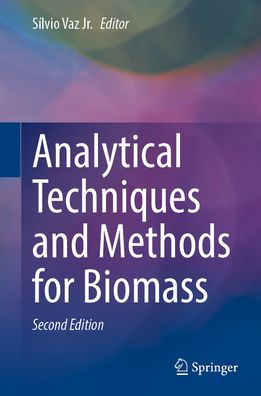Modern chemistry plays a crucial economic role in industrial activities based on biomass. There is an increasing emphasis on its application, specifically in the development of biorefineries, and the principles of green chemistry allow effective use of biomass while significantly reducing environmental impact. In this context, analytical chemistry can contribute significantly to the supply chains of biomass, be it plant or animal origin. However, biomass from plant sources presents both the greatest challenges and the highest opportunity for technical, scientific, and economic progress due to its diverse chemical constitution. Chemical analysis can be used to examine the composition of biomass, characterize its physicochemical properties, and monitor their conversion processes. This approach can enhance the quality of products derived from biomass and expand their potential applications.
The quality of the biomass used determines the product quality. Therefore, reliable information about the chemical composition of the biomass to establish the best use which will influence harvest and preparation steps is essential. Accordingly, this book includes contributions from select international experts who discuss key aspects of biomass structure, their physical and chemical properties, the parameters of conversion processes, the products and by-products formation and quantification, and quality parameters.
Modern chemistry plays a crucial economic role in industrial activities based on biomass. There is an increasing emphasis on its application, specifically in the development of biorefineries, and the principles of green chemistry allow effective use of biomass while significantly reducing environmental impact. In this context, analytical chemistry can contribute significantly to the supply chains of biomass, be it plant or animal origin. However, biomass from plant sources presents both the greatest challenges and the highest opportunity for technical, scientific, and economic progress due to its diverse chemical constitution. Chemical analysis can be used to examine the composition of biomass, characterize its physicochemical properties, and monitor their conversion processes. This approach can enhance the quality of products derived from biomass and expand their potential applications.
The quality of the biomass used determines the product quality. Therefore, reliable information about the chemical composition of the biomass to establish the best use which will influence harvest and preparation steps is essential. Accordingly, this book includes contributions from select international experts who discuss key aspects of biomass structure, their physical and chemical properties, the parameters of conversion processes, the products and by-products formation and quantification, and quality parameters.

Analytical Techniques and Methods for Biomass
340
Analytical Techniques and Methods for Biomass
340Hardcover(Second Edition 2025)

Product Details
| ISBN-13: | 9783031891373 |
|---|---|
| Publisher: | Springer Nature Switzerland |
| Publication date: | 09/03/2025 |
| Edition description: | Second Edition 2025 |
| Pages: | 340 |
| Product dimensions: | 6.10(w) x 9.25(h) x (d) |
